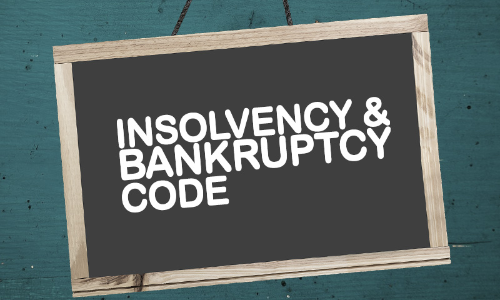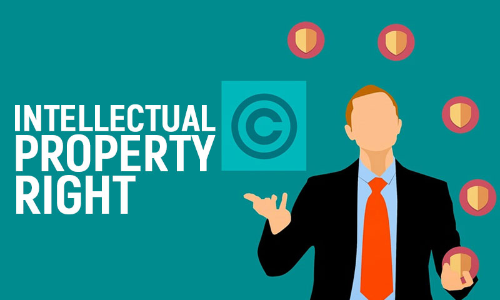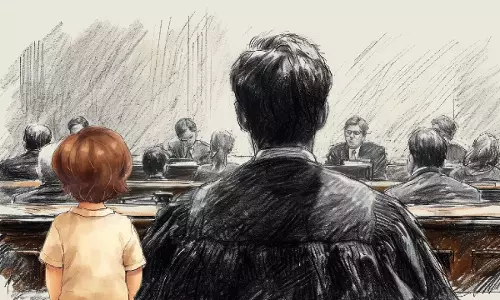
On September 28, Santoshi Kumar, an 11 year old girl in Simdega district of Jharkhand, died because of starving for nearly 8 days. Her family had not received any ration since months as their ration card was cancelled, after being struck off the Public Distribution System (PDS) for not linking their ration card with Aadhar. The system of Aadhar has been under continuous criticism for...
On September 28, Santoshi Kumar, an 11 year old girl in Simdega district of Jharkhand, died because of starving for nearly 8 days. Her family had not received any ration since months as their ration card was cancelled, after being struck off the Public Distribution System (PDS) for not linking their ration card with Aadhar. The system of Aadhar has been under continuous criticism for ‘depriving the most vulnerable people of their grain entitlements’. Since a set of Public Interest Litigations have been pending in the Supreme Court urging it to intervene and stop the government from mandating the compulsory possession of Aadhaar, therefore, without going into the debates around Aadhar, this piece discusses the larger issue of non-implementation of one of the basic rights- the right to food.
Right to Food
The right to food is a part of fundamental rights and directives principles of the Indian Constitution. In Chameli Singh v. State of U.P. (1996), a three judge Bench of the Supreme Court had held as follows: “In any organised society, right to live as a human being is not ensured by meeting only the animal needs of man… Right to live guaranteed in any civilised society implies the right to food, water, decent environment education, medical care and shelter. These are basic human rights known to any civilised society.”
The PDS in India is perhaps the largest distribution network of its type in the world. In spite of many programmes and schemes, there have always been concerns regarding food, hunger and malnutrition.
In 2001, after 47 tribals and Dalits were starved to death in south-eastern Rajasthan, despite India’s foodstocks having an excess of around 40 million tonnes of foodgrains that year, activists and organizations had approached the apex court to secure food security for Indians. In one of the initial orders, the Supreme Court in the Right to Food case (People’s Union for Civil Liberties v. Union of India) observed (23 July, 2001):
“In our opinion, what is of utmost importance is to see that food is provided to the aged, infirm, disabled, destitute women, destitute men, who are in danger of starvation, pregnant and lactating women and destitute children, especially in cases where they or members of their family do not have sufficient funds to provide food for them. In case of famine, there may be shortage of food, but here the situation is that amongst plenty there is scarcity. Plenty of food is available, but distribution of the same amongst the very poor and the destitute is scarce and non-existent leading to malnourishment, starvation and other related problems.”
The failure of the respective governments to implement the right to food has often intensified survival crisis of a huge percentage of the population, particularly in drought-affected areas. A public interest litigation filed by Swaraj Abhiyan, in 2016, before the Supreme Court had revealed that nearly 540 million, or 40% of the people in India, are in the grip of a drought.
Right to Food, Hunger & Malnutrition
In the Right to Food case, the Supreme Court had ruled that it was the duty of the government to ensure no one went hungry. Subsequently, the Apex Court ‘issued a series of interim orders, defining rights and entitlements over food and related services, all keeping the poorest as their focus’. The Court had also appointed Commissioners to monitor implementation of its orders.
As per Jean Dreze (2002), the right to food has been ‘invoked by citizen’s organisations to challenge the scandalous persistence of endemic hunger in India’. He states that:
“The right to food is about freedom from hunger. This can be interpreted in two different ways, associated with different readings of the term “hunger”. In a narrow sense, hunger refers to the pangs of an empty stomach. Correspondingly, the right to food can be understood, roughly speaking, as the right to have two square meals a day throughout the year. In a broader sense, hunger refers to undernutrition. The right to food (i.e. to be free from undernutrition) then links with a wide range of entitlements, not only to food itself but also to other requirements of good nutrition such as clean water, health care, and even elementary education.”
Food security has been defined, by the World Health Organization (WHO), ‘as a situation when all people at all times have physical and economic access to sufficient and nutritious food that meets their dietary needs and food preference for an active and healthy life’. This implies that ‘the lack of a balanced diet minus essential nutrients results in chronic malnutrition’. The data from World Bank clearly indicates that ‘India has one of the world’s highest demographics of children suffering from malnutrition, said to be double that of Sub-Saharan Africa’. According to UNICEF, nearly half of all deaths in children under 5, in India, are attributable to undernutrition. The statistics are appalling.
Right to Food & Man-Made Starvation
After having an improvement from 2008 to 2014, India’s rank on Global Hunger Index (GHI) has now slipped ‘three notches to 100 among 119 countries’ in 2017. In her article “India’s Slip on Global Hunger Index” in Economic & Political Weekly (Vol. 52, Issue No. 34- 26 August, 2017), Neetu Choudhary has stated that ‘it is India’s disappointing performance on child stunting and wasting that particularly accounts for its […] GHI score’. She further explains that:
“Malnutrition is not an apolitical issue; tackling it requires a consideration of the political economy and creation of an enabling environment... Thus, political commitment to abate the crisis of malnutrition would reflect partly in resources mobilised toward this end, and partly in inter-sectoral and intergovernmental coordination and partnership. Public expenditure on issues identified as crucial for nutrition is one of the macro indicators reflecting political commitment and policy priority.”
Drought and structural deficiencies have ‘left a large number of poor in the country at the risk of malnourishment in 2017’. This view has also been underlined in the writings of the Nobel laureate, Amartya Sen. In his book “The Country of First Boys” (2015), Sen has attributed the dire situation not to the lack of resources, but to the lack of political and social engagement.
The death of the Jharkhand girl is not an isolated incident. It has been a consequence of ‘man-made starvation’, which has been caused because of the negligence and mis-governance on the part of ruling establishments. The Food Corporation of India (FCI) has enough stock of foodgrains to meet the requirement of Public Distribution System (PDS) and ensuring strategic reserve despite drought situation which has prevailed. Despite its self-sufficiency in food availability, and being one of the world’s largest grain producers, about one-fourth of Indians go to bed without food. Lakhs of tons of food grain have often been wasting away because there aren't enough warehouses for storage. In spite of being a food surplus country, India has not been able to curb food grain wastage.
Indian Democracy’s Obligation
It is quite ironic that ‘a nation, which is riding high on various economic parameters to become the largest economy in the world in the upcoming decades, is still not able to come out from the dungeons of hunger and poverty’. The problems of hunger and malnutrition in India have been created by ‘structural poverty and inequality resulting in severe food insecurity’.
The National Food Security Act (NFSA), 2013, enacted with the objective ‘to provide for food and nutritional security in human life cycle approach, by ensuring access to adequate quantity of quality food at affordable prices to people to live a life with dignity’, was envisaged to cover about two-thirds of the population. In Swaraj Abhiyan v. Union of India (2016), the Supreme Court made it clear that: “[T]here can be no doubt that the right to food is actually a constitutional right and not merely a statutory right… In any event, even if the right to food is a statutory right, it would be the obligation of the State to make all possible efforts and some more to ensure that to the extent possible, adequate food grains are available to all and particularly to those in drought affected areas.” The Court had also warned that “[i]t is high time that the machinery under the NFS Act is put in place by all concerned otherwise the enactment of social justice legislations will have no meaning at all”. Therefore, the governments, after enacting legislations, cannot run away from their obligations towards the marginalised.
The implementation of NFSA must be carried out through transparent processes and public debate. This proposition has been discussed aptly in the recent Right to privacy case (2017). Dr. Justice DY Chandrachud’s main judgment held as follows: “Capture of social welfare benefits can be obviated only when political systems are transparent and when there is a free flow of information. Opacity enures to the benefit of those who monopolize scarce economic resources”. The judgment had further held: “[I]t must be realised that it is the right to question, the right to scrutinise and the right to dissent which enables an informed citizenry to scrutinise the actions of government. Those who are governed are entitled to question those who govern, about the discharge of their constitutional duties including in the provision of socio-economic welfare benefits”. In doing so, Justice Chandrachud invoked Amartya Sen’s writings to explain how transparency (in a democratic setup) promotes realization of most basic rights. The example of Maharashtra was cited as follows: “During the drought which took place in Maharashtra in 1973, food production failed drastically and the per capita food output was half of that in sub-Saharan Africa. Yet there was no famine in Maharashtra where five million people were employed in rapidly organized public projects while there were substantial famines in sub-Saharan Africa”. To support the contention, the following excerpt from Sen’s work “Development as Freedom” (Oxford University Press, 2000, at page 180) was quoted:
“The causal connection between democracy and the non-occurrence of famines is not hard to seek. Famines kill millions of people in different countries in the world, but they don’t kill the rulers. The kings and the presidents, the bureaucrats and the bosses, the military leaders and the commanders never are famine victims. And if there are no elections, no opposition parties, no scope for uncensored public criticism, then those in authority don’t have to suffer the political consequences of their failure to prevent famines. Democracy, on the other hand, would spread the penalty of famines to the ruling groups and political leaders as well. This gives them the political incentive to try to prevent any threatening famine, and since famines are in fact easy to prevent (the economic argument clicks into the political one at this stage), the approaching famines are firmly prevented.”
It has been widely accepted that the right to food is one of the basic economic and social rights. The fulfilment of the right to food is essential for achievement of “economic democracy” and “social democracy”, without which the Indian “political democracy” would remain incomplete. Dr. Ambedkar was prophetic in his final speech delivered to the Constituent Assembly (November 25, 1949, where he had clearly explained the essence of the Indian democracy in following words:
“On the 26th of January 1950, we are going to enter into a life of contradictions. In politics we will have equality and in social and economic life we will have inequality. In politics we will be recognising the principle of one man one vote and one vote one value. In our social and economic life, we shall, by reason of our social and economic structure, continue to deny the principle of one man one value. How long shall we continue to live this life of contradictions? How long shall we continue to deny equality in our social and economic life? If we continue to deny it for long, we will do so only by putting our political democracy in peril. We must remove this contradiction at the earliest possible moment or else those who suffer from inequality will blow up the structure of political democracy which is Assembly has to laboriously built up.”
Hunger is ‘incompatible with democracy in any meaningful sense of the term’. Indian democracy must hang its head in shame for every death which is caused due to hunger.
Anurag Bhaskar is an alumnus of Dr. Ram Manohar Lohiya National Law University, Lucknow. He can be contacted at anuragbhaskar007@gmail.com and tweets at @anuragbhaskar_





